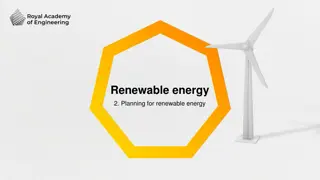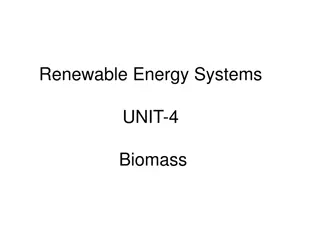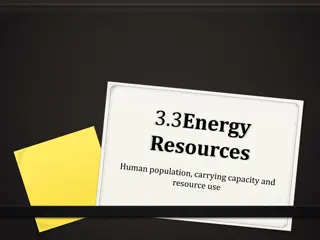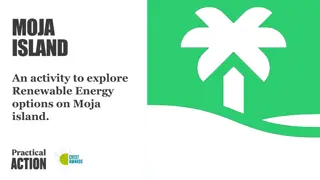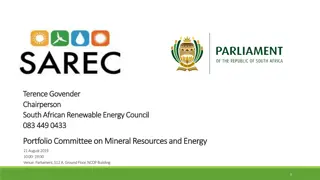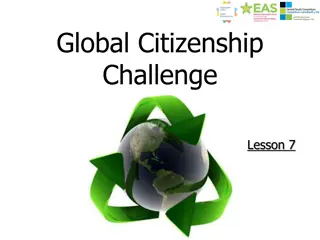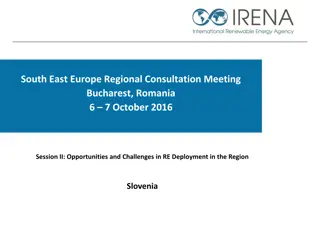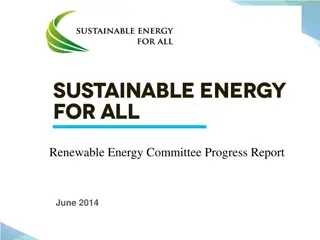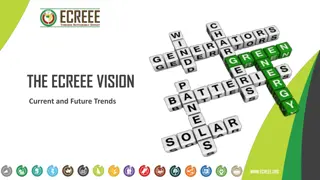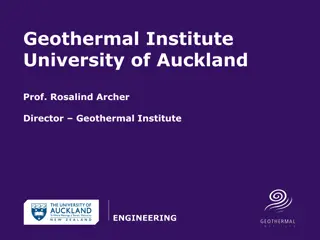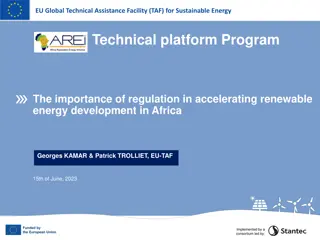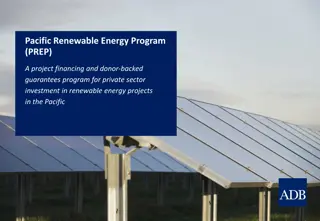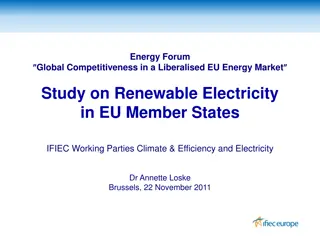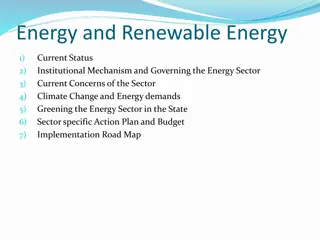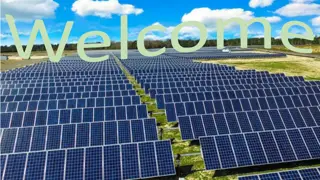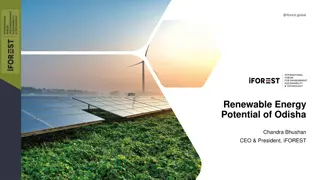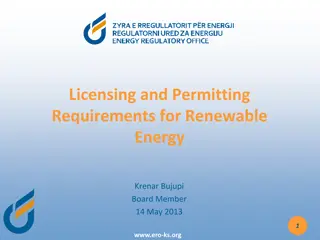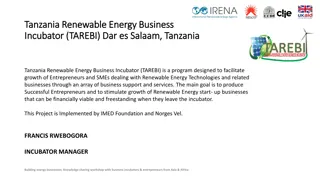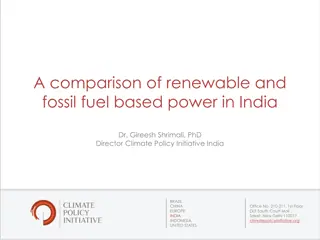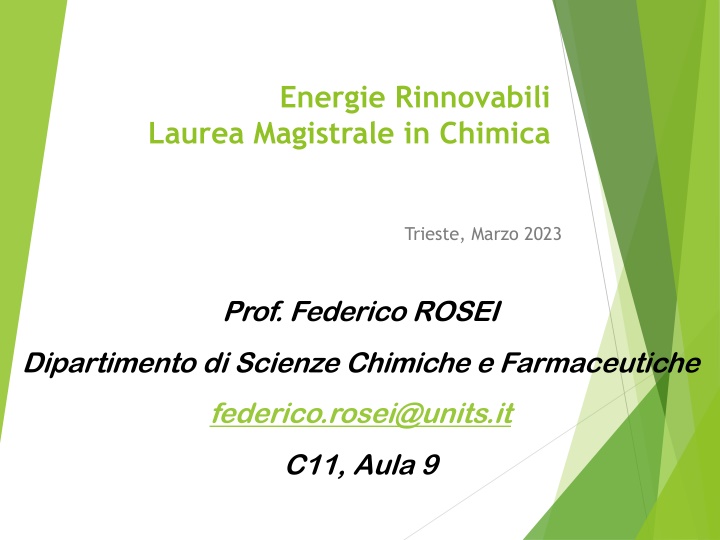
Renewable Energy in Chemistry - Exploring Energy Operations and Conversion
This information delves into renewable energy sources within the field of chemistry, focusing on energy operations such as conversion, saving, storage, and transmission. Examples of energy conversion from ancient times and modern energy-saving techniques are highlighted. The content also covers energy storage forms and discusses energy distribution and transmission systems, including the European grid and components of the electrical grid.
Download Presentation

Please find below an Image/Link to download the presentation.
The content on the website is provided AS IS for your information and personal use only. It may not be sold, licensed, or shared on other websites without obtaining consent from the author. If you encounter any issues during the download, it is possible that the publisher has removed the file from their server.
You are allowed to download the files provided on this website for personal or commercial use, subject to the condition that they are used lawfully. All files are the property of their respective owners.
The content on the website is provided AS IS for your information and personal use only. It may not be sold, licensed, or shared on other websites without obtaining consent from the author.
E N D
Presentation Transcript
Energie Rinnovabili Laurea Magistrale in Chimica Trieste, Marzo 2023 Prof. Federico ROSEI Dipartimento di Scienze Chimiche e Farmaceutiche federico.rosei@units.it C11, Aula 9
n.5 Energy Operations Energy Conversion Energy Saving Energy Storage Energy Transmission 2
Energy Operations There are four main operations that we perform on energy: conversion from one form into another saving it by adopting more efficient materials and technologies i. ii. iii. storing it for later use and iv. transmitting it over a distance All four are crucial components of our energy infrastructure 3
Examples of energy conversion Some examples of energy conversion since ancient times: 1. Combustion to convert fuel (including wood !) into heat 2. Muscular / potential conversion into mechanical energy (e.g. kinetic energy, motion) 3. Wind to power windmills & sailboats 4
Energy saving Examples of energy saving: Using more efficient conversion technologies (e.g. solid state lighting vs. incandescent filament, electrical motor vs. internal combustion engine) Materials with high thermal insulation, e.g. to reduce heat dissipation 5
Energy storage Energy can be stored in many forms Electrical energy Batteries, supercapacitors Potential energy Fuels (chemical energy) 6
Energy distribution & transmission Electrical grid Static grid Smart grid 7
The electrical grid is the electrical power system network comprised of the generating plant, the transmission lines, the substation, transformers, the distribution lines and the consumer. Traditionally, electricity generation facilities have been developed in locations far from consumption centres with the electric grid connecting the two1. The electrical grid is divided into three main components2: GENERATION There are two types of generation centralized and decentralized. Centralized generation refers to large-scale generation far from consumption. This includes coal, nuclear, natural gas, hydro, wind farms and large solar arrays. The grid connects centralized power to consumers. Decentralized generation occurs close to consumption, for example rooftop solar. TRANSMISSION and DISTRIBUTION- Transmission includes transformers, substations and power lines that transport electricity from where it is generated to points of consumption. When electricity is at high voltages, transmission losses are minimized over long distances and resistive transmission lines. Therefore, at the point of generation, substations contain transformers that step-up the voltage of electricity so that it can be transmitted. Transmission is achieved via powerlines and can occur either overhead or underground. When it arrives at points of consumption, another substation is found to step-down the voltage for end-use consumption3. CONSUMPTION There are various types of consumers; namely industrial, commercial and residential consumers. Each of these consumers has different needs but in general electricity delivers important energy services like light and power for appliances . 9
Smart grid A smart grid is an electricity network that uses digital and other advanced technologies to monitor and manage the transport of electricity from all generation sources to meet the varying electricity demands of end users. 10


